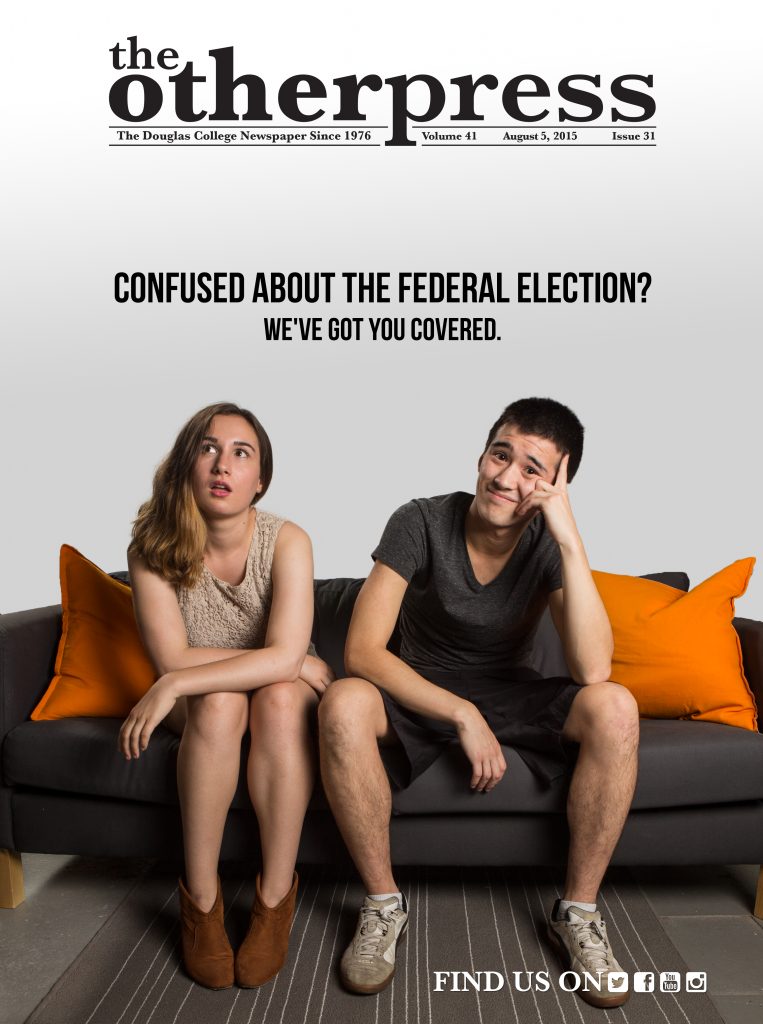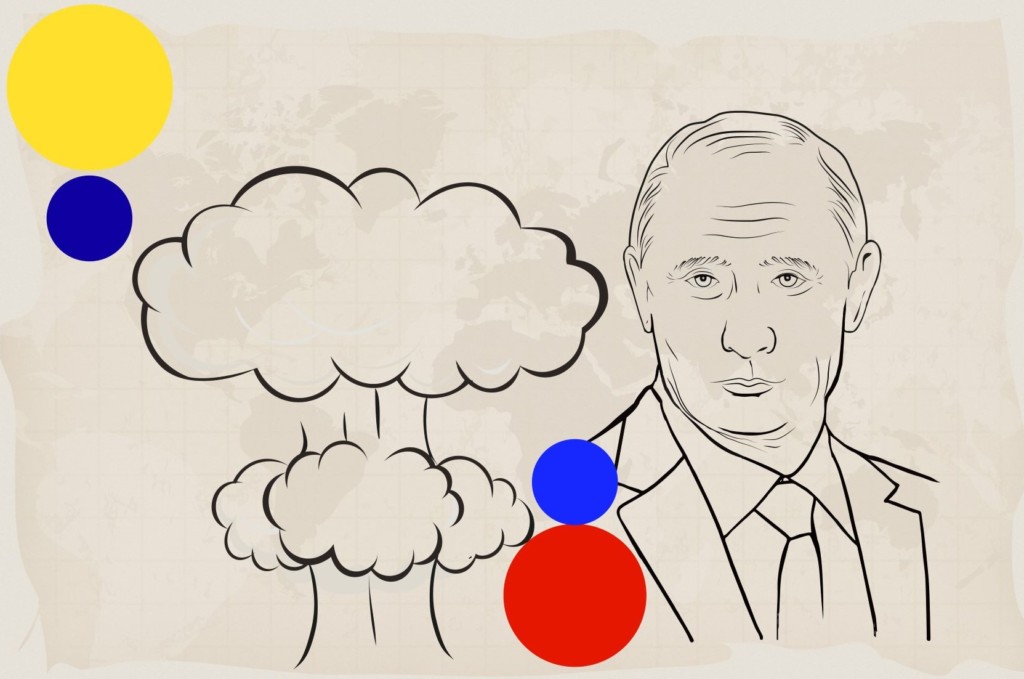What you need to know about Canada’s federal election
By Mercedes Deutscher, Staff Writer
On October 19, Canada will be holding its 42nd federal election. As responsible citizens, it is our right and duty to vote and elect our representatives. Here’s what you need to know to vote on the big day!
How to vote
If this is your first time voting in a federal (or any) election, you may not know where to start. You should keep in mind the following points:
– Be sure that you have registered to vote and are on the voters list prior to October 19. You cannot simply walk into a polling station on the day of the election. Register to vote in advance at Elections.ca.
– Know where to vote: you cannot walk into just any polling station. Usually your polling station will be the one closest to your home address. You can confirm your polling station at Elections.ca or at the website of your municipality. If you have two addresses—for example, a dorm—use the address you consider home.
– Bring your identification on voting day. Acceptable ID includes one piece of government issued photo ID, such as a driver’s licence; or two pieces of secondary ID, one with your name and one with your name and address, such as bills, student IDs, or a cash tender card; or, two documents with your name and a friend who can attest to your address by taking an oath. The friend must have an address.
– If you cannot vote on the day of the election, be sure to vote on an advanced voting date. Advanced polls open on October 7 and close on October 10.
The parties and their front-runners
You know how to vote, but still are unsure about who to vote for. Here are four parties, their ideals, and their leaders. Keep in mind that you will be voting for their representative in your riding on the election day.
Conservative: Considered right of centre on the political spectrum.
Leader: Prime Minister Stephen Harper.
Platforms:
– Economic surplus.
– Strong national security.
– Expanding large businesses.
Liberal: Considered centre on the political spectrum.
Leader: Justin Trudeau
Platforms:
– More tax breaks for the middle-class, and fewer for the wealthy.
– An increase to the Canada Child Benefit plan.
– Increased transparency of the government.
– Reducing barriers to trade.
– New review processes of projects that may pose a threat to the environment.
– Legalization of marijuana.
– Increasing the involvement of young people in politics.
– Bringing back the long-form census.
– Reforming the senate.
New Democratic (NDP): Considered left on the political spectrum.
Leader: Thomas Mulcair
Platforms:
– Rewarding small business.
– Increasing the national minimum wage to $15 per hour.
– Childcare for $15 per day.
– Fines for companies that produce a lot of pollution.
– Returning the retirement age back to 65.
– Improvement to the current healthcare system by increased funding.
– Abolishing the Senate.
Green: Considered left on the political spectrum.
Leader: Elizabeth May
Platforms:
– Clean energy.
– Initiatives for small business.
– Public transportation.
The opinion poll ratings
As of July 21, both the NDP and the Conservative party are neck-in-neck in opinion polls as Canadians’ favourite party.
Between 2013 and 2015, the Liberal party held a healthy lead in the polls, ever since Justin Trudeau was elected as the party’s leader. In 2015, that lead in the polls began to slowly drop as the Conservative party gained some more approval after the release of the year’s budget. Meanwhile, with new initiatives introduced post-budget, the Conservative party’s rating has improved slightly.
As the only major party in the House of Commons to oppose C-51, the NDP experienced a sharp increase in the opinion polls after spending two years in third place. They briefly held the top spot in the polls before having tied ratings with the Conservative Party.
Pressing issues in the 2015 Federal Election
There is no doubt that certain events have shaped the course of this election. These issues have influenced the polls and might be key in determining the winning party.
One of the most important issues of this election is C-51. The anti-terrorism act was in part devised after the shooting on Parliament Hill on October 22, 2014. The act allows for CSIS and police to exercise greater authority when determining a terrorist threat including protests, more power to privately investigate suspected terrorist activities, and more authority to seize materials.
Even before being passed in early May, the bill had garnered some controversy for reportedly being too intrusive, and not holding the police and CSIS accountable for their actions. This prompted protests and petitions to end the law.
The Conservative Party, which introduced the bill, supports C-51. The Liberal Party also supports the bill, although adding that they would like to increase the accountability of the police and CSIS.
The Green Party was the first party to come out in opposition of the bill, along with the NDP. As more and more Canadians opposed the bill, both the NDP and Green Party rose in popularity, and the Liberal Party began to lose its lead in the polls.
Another critical issue at play for the upcoming election is the future of the Senate. Since the discovery of the Senate scandal involving Mike Duffy, Patrick Brazeau, Mac Harb, and Pamela Wallin, many have been questioning the Senate’s future.
The Conservative Party wishes to maintain the Senate’s current form as a symbol of tradition. Meanwhile, the Liberal Party wishes to keep the Senate, but to introduce reform. Such reform includes making the Senate a non-partisan body and establishing a closer relationship between the Senate and the auditor-general. The NDP wishes to abolish the Senate entirely.
Over the past year, the Canadian dollar has plummeted to its lowest point in over a decade. It is critical that the Canadian economy rises soon, whether that be through new jobs, new trade agreements, cutting back on public services, or through some boom in Canadian tourism.
The Conservative party plans to help boost the Canadian economy by investing in natural resources, such as fuels and oils, and by increasing the strength of current trade deals, such as Canada’s economic relationship with China.
The Liberal Party hopes that by investing in cleaner technology, the government will create more jobs for Canadians. They also believe that by reducing the number of barriers to trade, as well as installing more free-trade agreements, Canada can boost its own economy while helping other economies.
The NDP’s plan for the national economy includes boosting the job market by creating more public service jobs, as well as introducing more tax cuts for smaller businesses in order to help them thrive.
The Green Party combines both support for small businesses and investments in newer and cleaner technology in its economic plans.
An increased awareness in humankind’s impact on the environment—along with worsening ecological conditions—is sure to play a larger role than ever before in the 2015 election.
The Liberal Party wishes to improve the process in which potentially dangerous projects, like pipelines, are approved. They also plan to place a greater emphasis on Canada’s national parks, reopen the Kitsilano Coast Guard base, and place environmental resolutions that would slowly phase out fossil fuels.
The Conservative Party and the NDP have yet to release an environmental platform.
The Green Party, whose largest focus is on environmental action, plans to promote alternative forms of transportation throughout Canadian cities, provide incentives for those who use clean energy and penalize those who do not, and enact policies that would begin to enforce a fuel-free workforce.
As the weeks count down to the federal election, be sure to stay on top of the pertinent issues—and above all, get out and vote!



